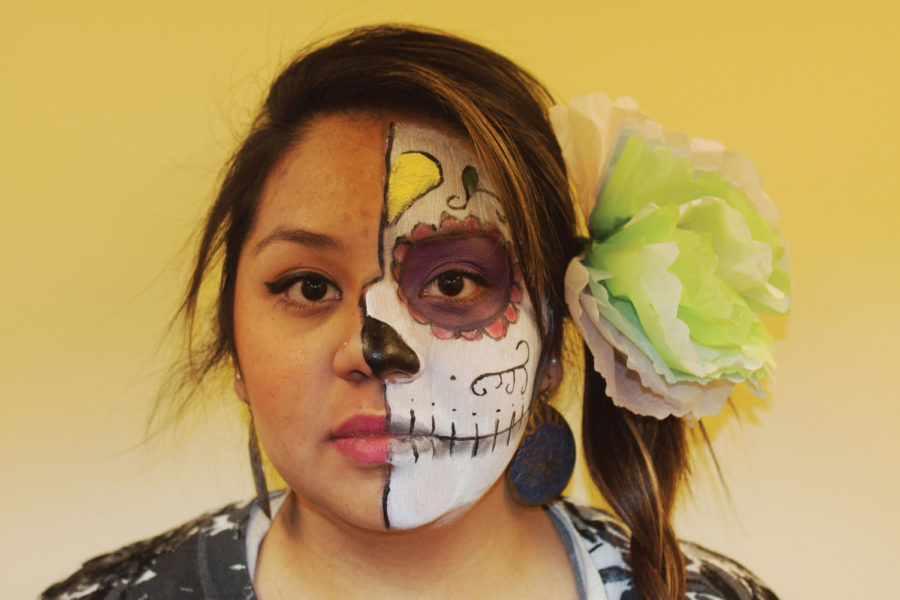Dia de los Muertos embraces death as a part of life
Irma Tello sophomore in Math poses for Day of the Dead.
November 1, 2012
Death typically summons feelings of pain, sadness, and an overwhelming feeling of loss, but Dia de los Muertos, or the Day of the Dead, allows families to honor their deceased loved ones with traditions originating from the Aztec and Mayan cultures.
“It’s both emotional and also a fun event,” said Jesus Rodriguez, junior in construction engineering and president of the Latino-based fraternity Sigma Lambda Beta. Rodriguez remembers celebrating Dias de los Muertos every year as a child.
Although the holiday is known as “Day of the Dead,” the celebration takes place over a two-day period for specific reasons.
“Nov. 1, is celebrated for the children who have passed away. You bring out their toys in reminiscence of the children and any games that they would play,” said Julio Ramirez, senior in industrial technology and president of the Mexican-American Young Achievers Society.
Aztec and Mayan cultures believed that the soul returns for one day a year after death to visit their loved ones.
“Nov. 2, at the strike of midnight, that’s when the adults are coming out. That’s when you go to the cemetery; you decorate with flowers and clean it up, and you have a picnic there,” Ramirez said.
Creating an altar to place pictures, flowers, candles and sugar skulls (calaveras) is a part of the long-standing tradition. Along with favorite foods of the dead, the altars often include the basic needs for the spirits to get ready for their return.
The altar is often created in the home or at the grave site. Colorful tissue paper (papel picado) is used to create intricate designs like skulls to hang across the altar.
“We usually use strong colors, rich colors: yellow, red [and] blue. Colors that bring energy [and] that bring brightness,” Rodriguez said.
Ramirez and group members plan to construct a self-funded altar for the Day of the Dead celebration held Nov. 6 in the Sun Room of the Memorial Union. The event will educate students about the traditions and history of the celebration with crafts and face painting from 7:30 to 9:30 p.m.
“Basically, we want people to learn stuff outside of what they already know. For example, when people think about trick-or-treating or Oct. 31, all they think about is dressing up, getting candy, or, for example, college students going out and partying. That’s all they know,” Rodriguez said.
Rodriguez hopes that students at Iowa State are able to experience other cultures and have new perspectives on what Day of the Dead represents.
“You celebrate; you embrace death. It’s something that’s going to happen, and so [those who celebrate] embrace it; they’re not scared of the day,” Ramirez said. “They know it’s there, so they embrace it. That’s when they welcome back family who has passed away.”







